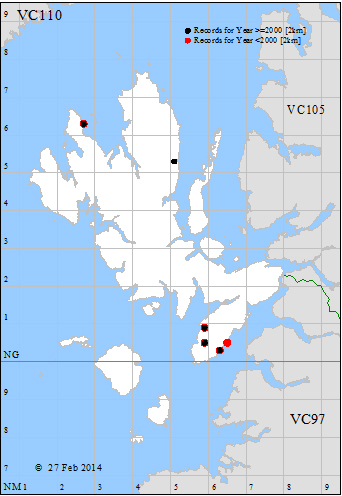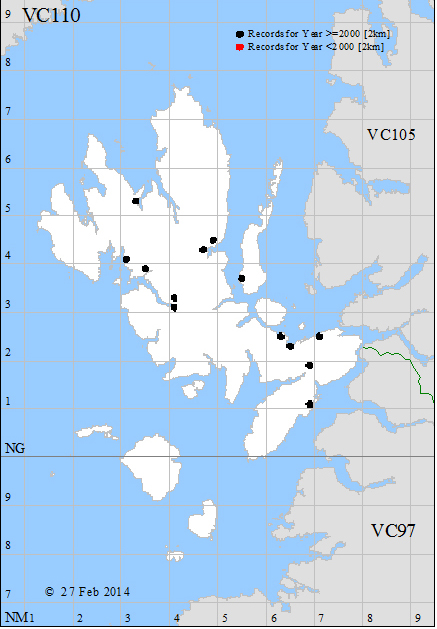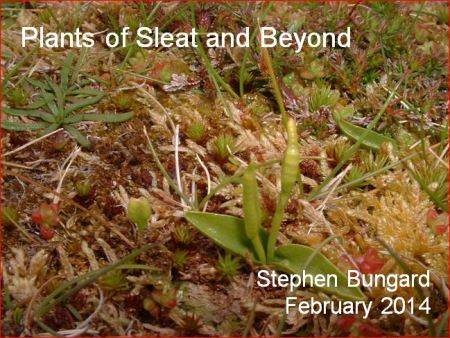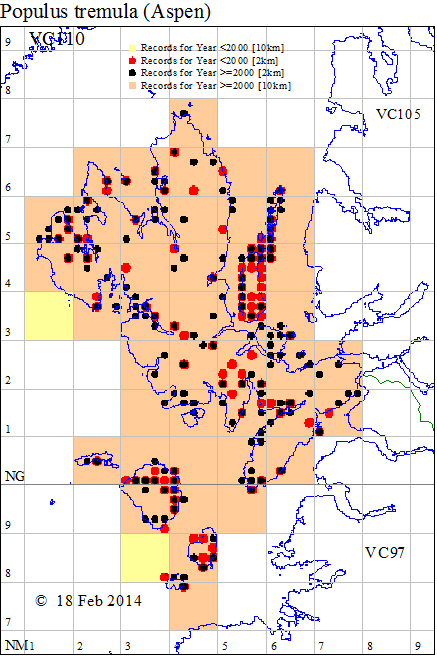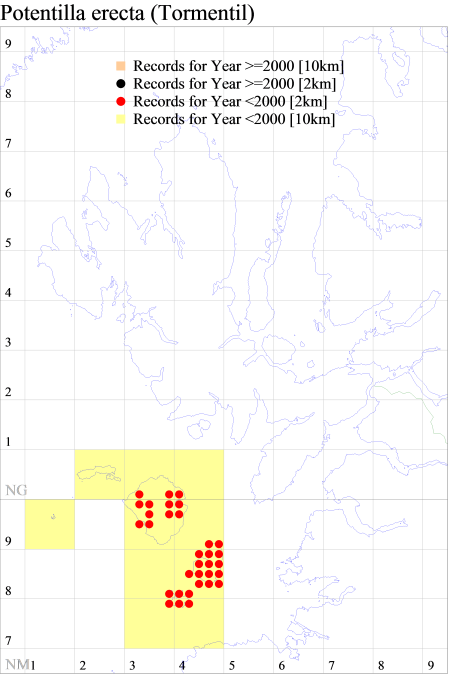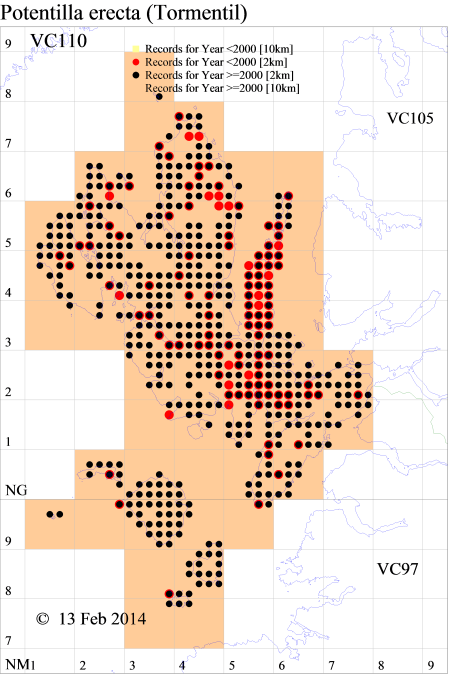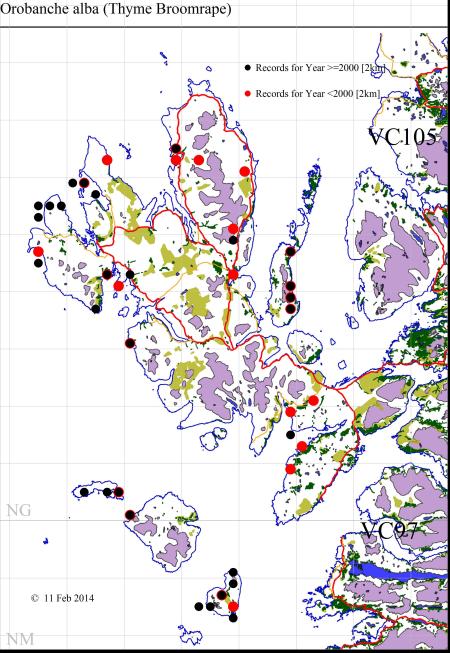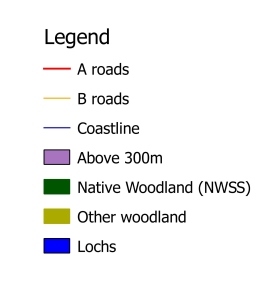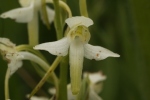The talk seemed to go down well and the audience was surprisingly numerous. Local ceramicist Patricia Shone was able to tell me that the Cephalanthera longifolia (Narrow-leaved Helleborine) at Fairy Glen, Calligarry was still present in 2011. This is something I have looked for and in the absence of a precise location, failed to find. The distribution map now looks like this:
The remaining red dot is for a 1977 record at Armadale Castle. (Corrected from earlier version of this post.)
From Sandy Masson I learned that the Peltaria alliacea (Garlic Cress) at the top of the shore at Rubha Phòile was planted by an itinerant Irishman in, I think, 1988, and that it seeds up onto the area above.
Roger was inspired to send me further Aspen and Early-purple Orchid records today – but we still have no EPO record for Sleat since before the year 2000.
There seemed to be some enthusiasm to look out for plants not recorded recently in Sleat. I am, of course, always delighted to receive records or queries – or images for identification…..
Elsewhere, members of the Skye Botany Group are stirring, and apparently concentrating on aliens. Linda reports Cortaderia richardii (Early Pampas-grass) from a new 10km square near Greshornish so that the distribution map now looks like this:
Watch out – this pest may be heading your way…..
Meanwhile Steve reports Cotoneaster simonsii (Himalayan Cotoneaster) from NG52, the first record for that 10km square for forty years.
